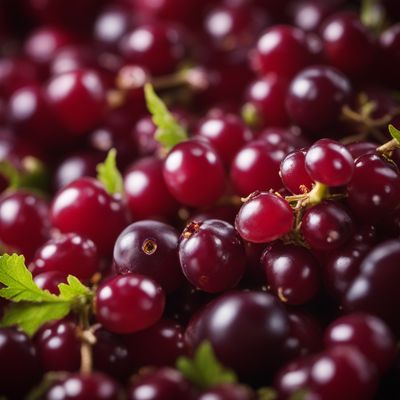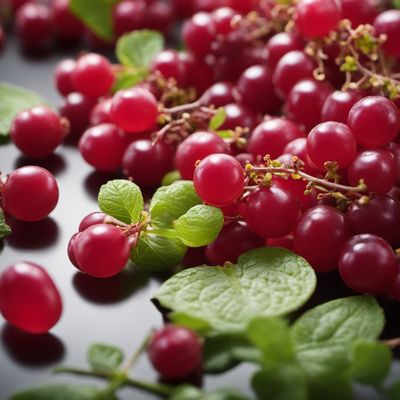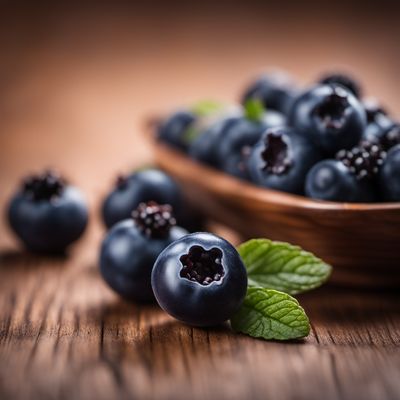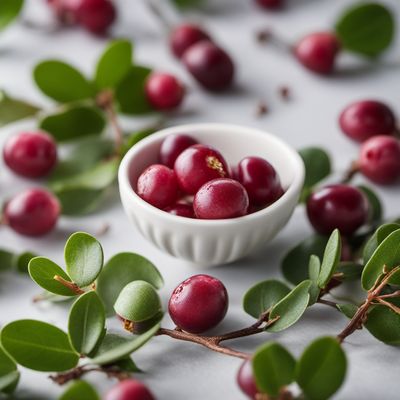
Ingredient
Myrtle berries
The Enchanting Berries of Myrtle
Myrtle berries are small, dark purple fruits that possess a distinctive flavor profile, combining sweet, floral, and slightly tart notes. With their captivating taste and aromatic qualities, these berries are prized in culinary applications, particularly in Mediterranean and Middle Eastern cuisines.
Origins and history
Myrtle berries have a rich historical significance, dating back to ancient times. They were highly regarded by the Greeks and Romans, who used them in various culinary and medicinal preparations. Myrtle berries are native to the Mediterranean region and are still widely cultivated in countries like Italy, Greece, and Turkey. They are known for their association with love, beauty, and fertility in mythology and folklore.
Nutritional information
Myrtle berries are a good source of antioxidants, vitamins, and minerals. They contain high levels of vitamin C, which supports immune function and collagen production. Additionally, myrtle berries are rich in polyphenols, which have been associated with various health benefits, including anti-inflammatory and antioxidant properties. These berries are also low in calories and fat, making them a nutritious addition to a balanced diet.
Allergens
There are no known allergens associated with myrtle berries.
How to select
When selecting myrtle berries, look for ones that are plump, firm, and evenly colored. Avoid berries that are overly soft or have blemishes or mold. Fresh myrtle berries should have a pleasant aroma, reminiscent of their floral and fruity notes. If purchasing dried myrtle berries, ensure they are free from moisture and have a vibrant color.
Storage recommendations
To maintain the freshness of myrtle berries, store them in the refrigerator in a breathable container or a perforated plastic bag. This will help prevent moisture buildup and extend their shelf life. Alternatively, myrtle berries can be dried or frozen for longer-term storage. Dried myrtle berries can be stored in airtight containers in a cool, dark place.
How to produce
Myrtle berries are typically grown in Mediterranean climates and require specific conditions to thrive. They can be cultivated in home gardens, provided the climate and soil conditions are suitable. However, it's important to note that myrtle berries may take several years to bear fruit. Research the specific requirements of myrtle berry cultivation, including sunlight, soil pH, and watering needs, for successful growth.
Preparation tips
Myrtle berries can be used in various culinary preparations. They are commonly used to infuse flavor into liqueurs, syrups, and vinegars. The berries can also be used to make jams, jellies, and sauces, adding a unique twist to traditional recipes. In Mediterranean and Middle Eastern cuisines, myrtle berries are often incorporated into meat dishes, stews, and desserts. They can be used as a garnish or a flavoring agent in salads, cocktails, and baked goods as well.
Culinary uses
Myrtle berries are commonly used in Mediterranean and Middle Eastern cuisines. They are particularly popular in Italian, Greek, and Turkish dishes. Myrtle berries are often found in traditional recipes like myrtle berry liqueur (Mirto), myrtle berry sauce (Sugo di Mirto), and myrtle berry-infused olive oil. They are also used in desserts, such as myrtle berry tart or myrtle berry gelato. Additionally, myrtle berries are sometimes used in herbal teas or as a garnish for cocktails.
Availability
Italy, Greece, Turkey
More ingredients from this category » Browse all

Sea buckthorns
The Tangy Treasure of the North

Salal
The Wild Berry: Salal

Golden currant
The Fragrant Spice of Delight

Serviceberries
The Berry of Abundance

Native currant
The Indigenous Jewel

Huckleberries
The Wild Delicacy: Unveiling the Enchanting World of Huckleberries

Ugniberries
The Enigmatic Delight: Unveiling the Secrets of Ugniberries

Bilberries (generic)
The Secret Superfood: Unveiling the Power of Bilberries

Other species and hybrids of genera Ribes and Vaccinium, not elsewhere mentioned
Exotic Berry Medley

Blueberries
Bursting with Antioxidant Power: The Vibrant World of Blueberries

Jostaberries
The Tangy Delight: Unveiling the Secrets of Jostaberries

Bearberries
The Wild Berry Wonder
